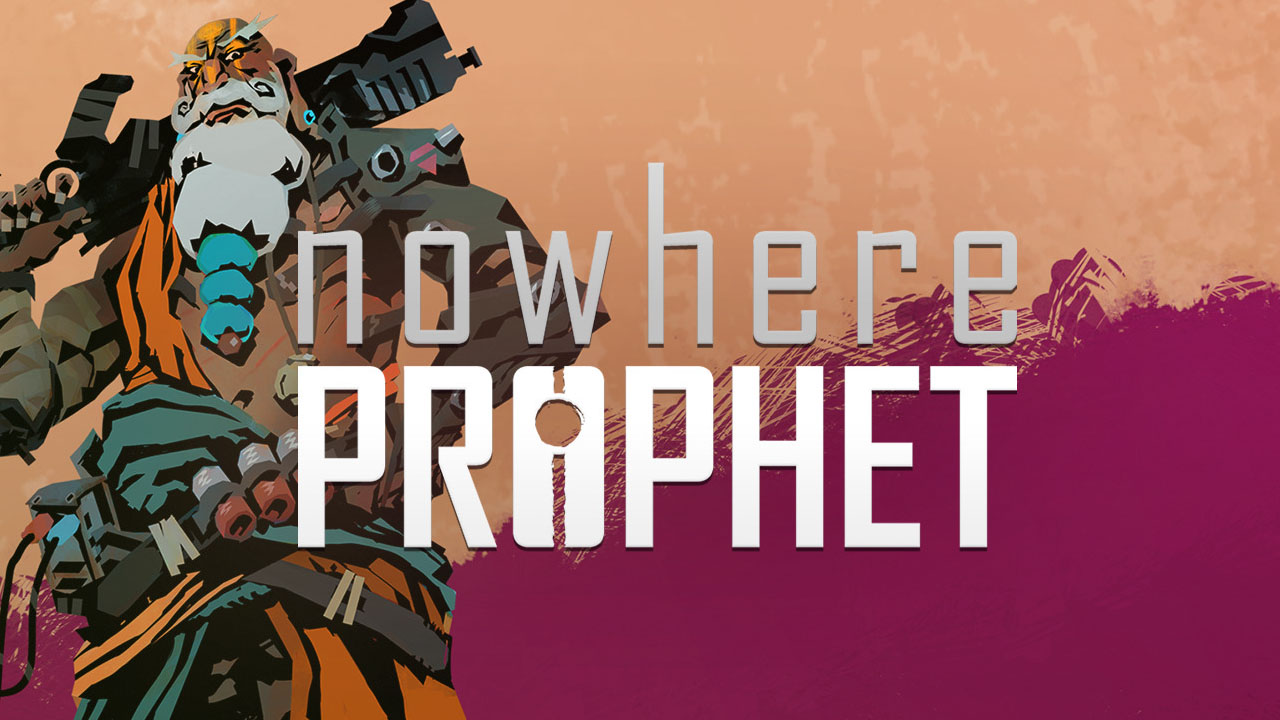
Love or hate them, roguelite elements have a tendency of squirming their way into a wide range of games and genres, and the current hot trend is the roguelite deckbuilder. Mega Crit’s Slay the Spire probably wasn’t the first game to combine these two hit genres, but it definitely popularized the concept. We’ve easily seen a few dozen roguelite deckbuilders since Slay the Spire first hit Early Access several years back, and many of them try to copy the same general formula and feel as closely as possible. While Sharkbomb’s Nowhere Prophet certainly takes its fair share of cues from Slay the Spire, it also adds an interesting tactical, positioning-focused battle system more reminiscent of Mojang’s ill-fated Scrolls digital CCG. The results are a mixed bag in places, but there’s enough going for it that fans of roguelite deckbuilders should pay attention.
Nowhere Prophet
Publisher: No More Robots
Developer: Sharkbomb Studios
Platforms: Windows PC (Reviewed), Mac, Linux
Release Date: July 19th, 2019
Players: 1
Price: $24.99
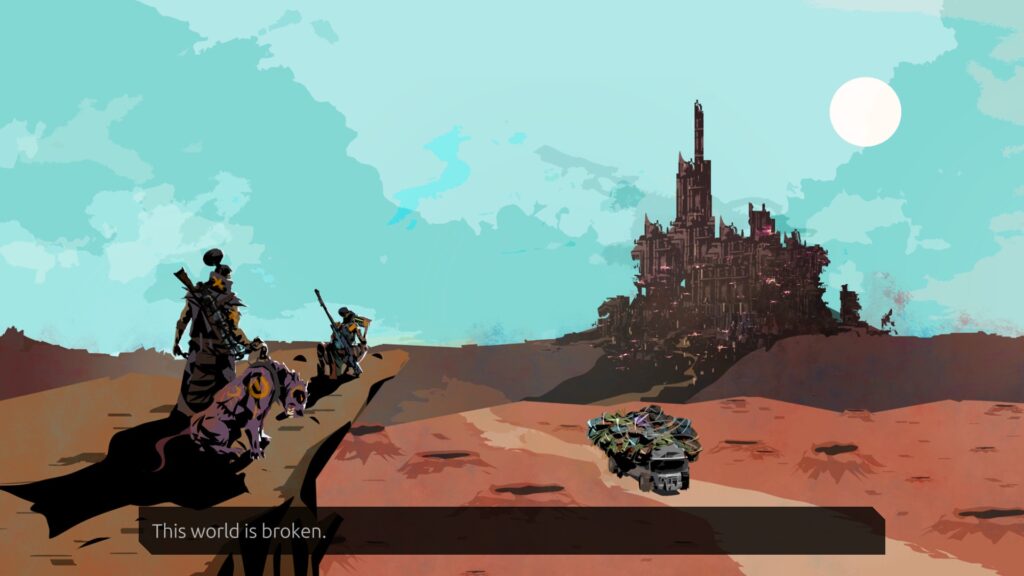
Nowhere Prophet is set on Soma, a distant desert world that was turned into a post-apocalyptic wasteland by an enigmatic catastrophe called The Crash. Civilized society has collapsed in all but a handful of relatively safe strongholds.
Technological progress has halted and regressed to a point not unlike what’s seen in Warhammer 40k, where pre-Crash tech is treasured and worshipped to an almost religious degree. Soma is now a planet full of slavery, starvation, famine, banditry, and extreme danger, where the wastes outside of “civilization” are dominated by bloodthirsty apex predators, fanatical tech-cults, roaming marauders, and malfunctioning pre-Crash combat drones.
You play as a prophet that has discovered a pre-Crash satellite as it fell to Soma’s sand-blasted surface. The satellite’s AI fills your mind with visions of The Crypt, a mythological vault full of pre-Crash technology. Many have searched for The Crypt with the promise of finding a safe haven where the scarcity of everyday life on Soma would become a distance memory, but all have failed up until this point.
Your holy vision has sent you on a quest to lead your people to salvation by finding The Crypt and using its wealth of technology and resources to establish a sanctuary away from the dangers and anarchy that exists elsewhere on Soma.
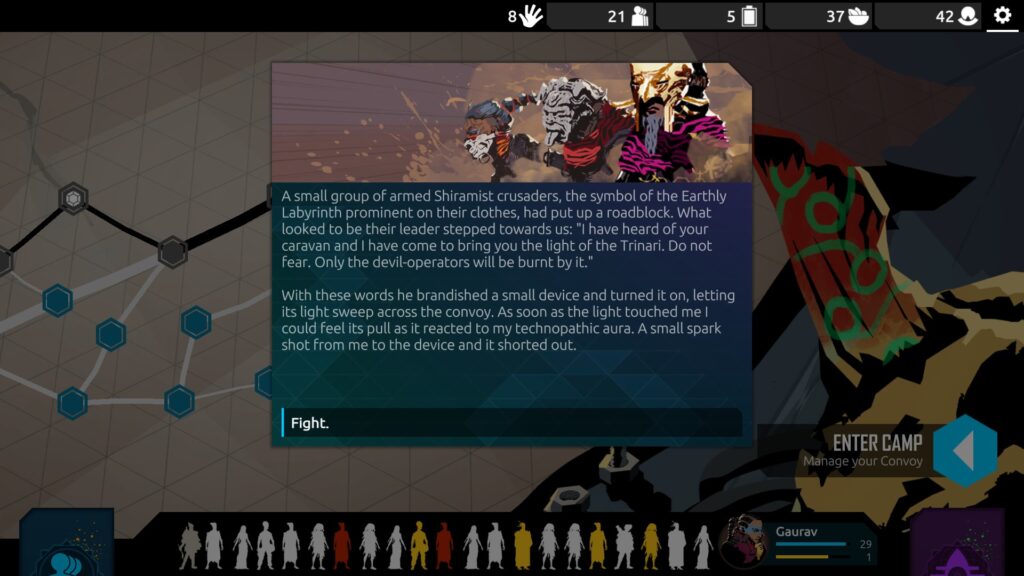
One of Nowhere Prophet‘s biggest strengths is definitely in its presentation and worldbuilding. Soma is heavily inspired by Indian culture and Hindu mythology, and blends these elements together in a post-apocalyptic sci-fi setting that is gradually presented to you through random events and exploration.
The game’s writing is pretty solid, and it does a great job of drip-feeding you lore without resorting to massive infodumps and pointless over explanation. The game’s art and music are also great, with a soundtrack that is recognizably inspired by Indian culture, but blended with electronic and synth tunes.
The choice to draw so much from Indian culture helps Nowhere Prophet present players with an interesting and exotic sci-fi setting where traditional Hindu mysticism converge with cyberpunk elements like technology worship and transhumanism, alongside Mad Max-esque desert wastelands and roaming bands of psychotic marauders.
A run in Nowhere Prophet starts by picking a prophet and starting convoy deck, both of which form the game’s overarching meta progression between sessions. Each convoy deck and prophet have different passive bonuses in addition to starting card composition, and more of these bonuses are unlocked after hitting certain milestones while playing those decks. You also unlock more prophets and follower decks as you complete (or fail to complete) runs.
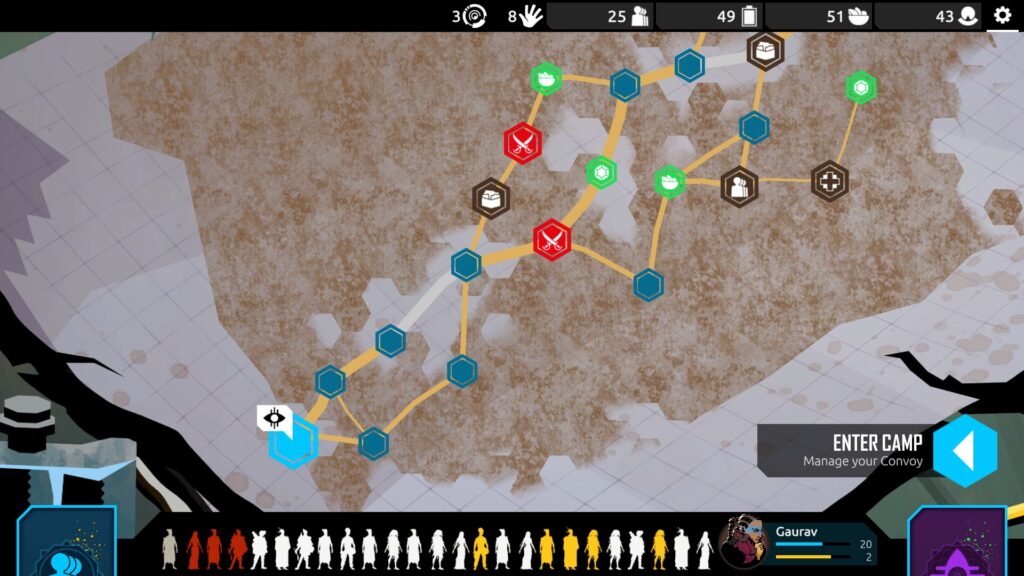
Each run consists of navigating several procedurally generated maps that feature interconnecting pathways of nodes, not unlike Slay the Spire or FTL. However, unlike many other games that use this level design formula, its possible to backtrack at the expense of time and resources, and in many ways you are encouraged to do so.
As you’d expect, each node represents a random encounter of some sort. Many times you’ll also stumble across additional random encounters between nodes. Potential random encounters include small towns, rest areas, text-driven story tidbits where you are forced to make sometimes difficult or risky choices, hunting and gathering areas that can give you resources, battles, and more.
Traveling between nodes costs resources, namely food and hope. As these resources become exhausted, followers might desert or succumb to starvation. Food is automatically added to your supplies when you acquire it, but to restore hope you’ll need to use consumable items when you set up camp that also grant a small bonus in your next combat encounter.
Resources aren’t a major concern in the lower and middle difficulty settings because they are moderately plentiful, but become a larger consideration on the hardest settings.
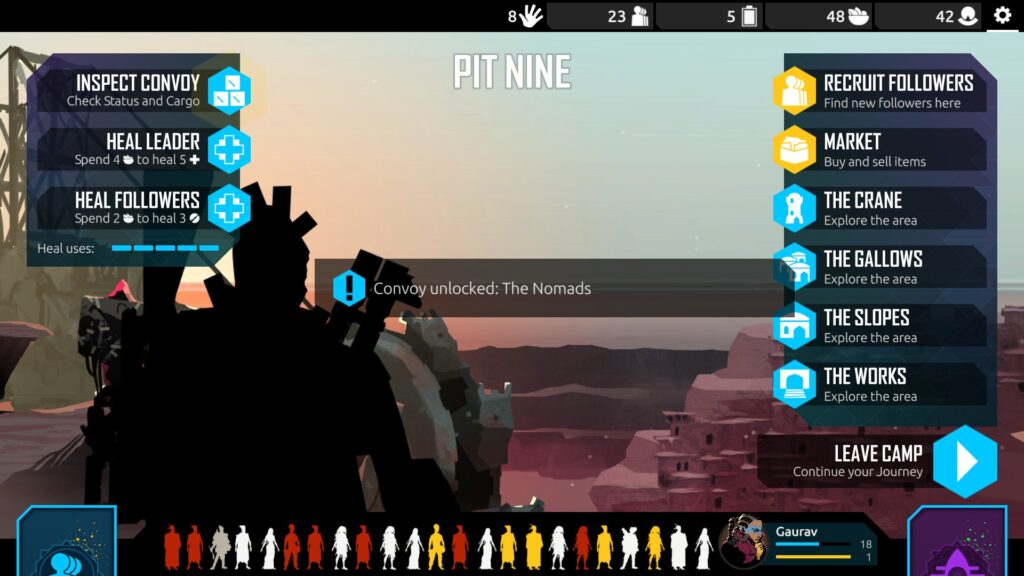
Each map is capped off with a boss fight, and normally followed by a large town or stronghold where you can recruit new followers, buy and sell items and equipment, rest up to recover health or tend to your injured followers, and places to explore that can trigger quests or random events.
Once you leave the town, you’ll get to choose the next map you move on to. Each run isn’t as short and bite-sized as many other roguelites, and could potentially extend across several hours and multiple play sessions.
You will be building two decks as you play Nowhere Prophet: your convoy deck and your action deck. The convoy deck consists of all the followers you acquire on your pilgrimage, and can contain up to 30 cards. The action deck consists of what’s essentially your spells, be they direct damage cards, buffs, debuffs, and so on.
You acquire new followers by recruiting them from towns or random events, while new action cards are drafted every time you level up your prophet or visit a teacher in certain towns. Each card has a rarity, which generally determines how strong and useful they are.
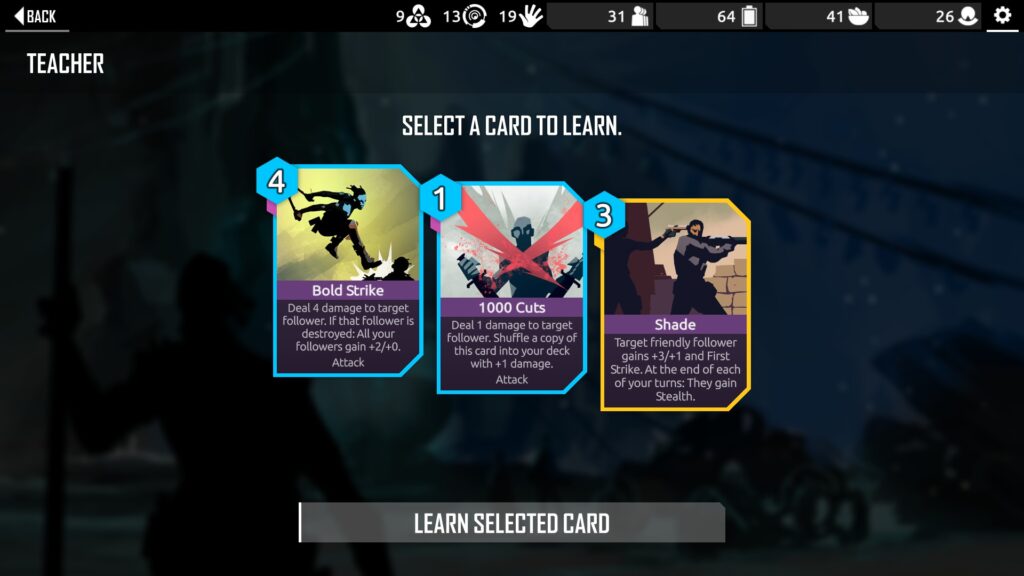
You can modify your convoy deck whenever you want, but modifying your action deck is a bit more tricky. You may add a card every time you level up, but removing cards requires you to spend special resource points or using specific vendors. Like many deckbuilding games, you’ll want to take every opportunity you can to cull your action deck of the less useful starting cards as you progress through a run.
Your followers have uses outside of combat as well. Sometimes they’ll interject during a random event, and might offer you a unique choice during that event. These can often be risky however, as failure can lead to a valuable follower dying. While its cool that your rare and legendary followers have such utility outside of combat, I really wish the game expanded on the chance systems involved.
The game hides your actual chances during these encounters, and just gives vague statements like “Risky” or “Unlikely.” They don’t tell you any percentages, yet alone how they came to that percentage, which just seems like the unnecessary hiding of information.
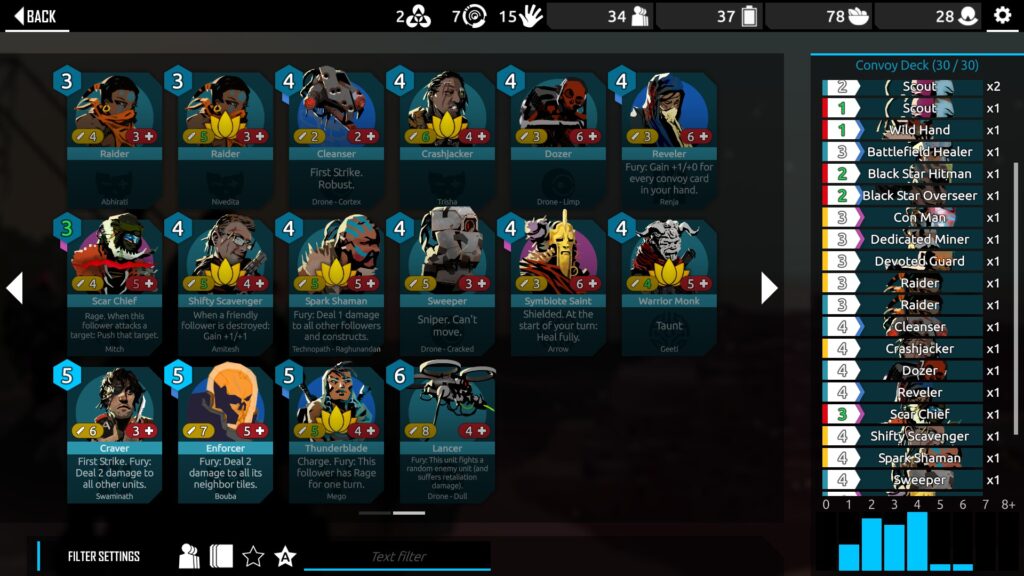
Unfortunately, the game also needs some more random encounter variety. The actual random encounters themselves are pretty good and often provide interesting dilemmas to overcome, but there’s no where near enough of them. I was noticing the same random encounters being repeated over and over again after just a few runs.
Combat encounters in Nowhere Prophet come in the form of turn-based tactical card battles. The battlefield is divided into several “lanes” consisting of circular slots where you place your followers. Each follower can choose to move between lanes, or attack the first thing in the opposing lane, be it an enemy follower or the enemy commander.
Battlefields also feature hazards and obstructions that you’ll need to play around, and add a nice extra layer of strategy to the game’s battles. The resource system takes the Hearthstone approach, where you start with three energy and gradually ramp up each turn as the battle drags on.
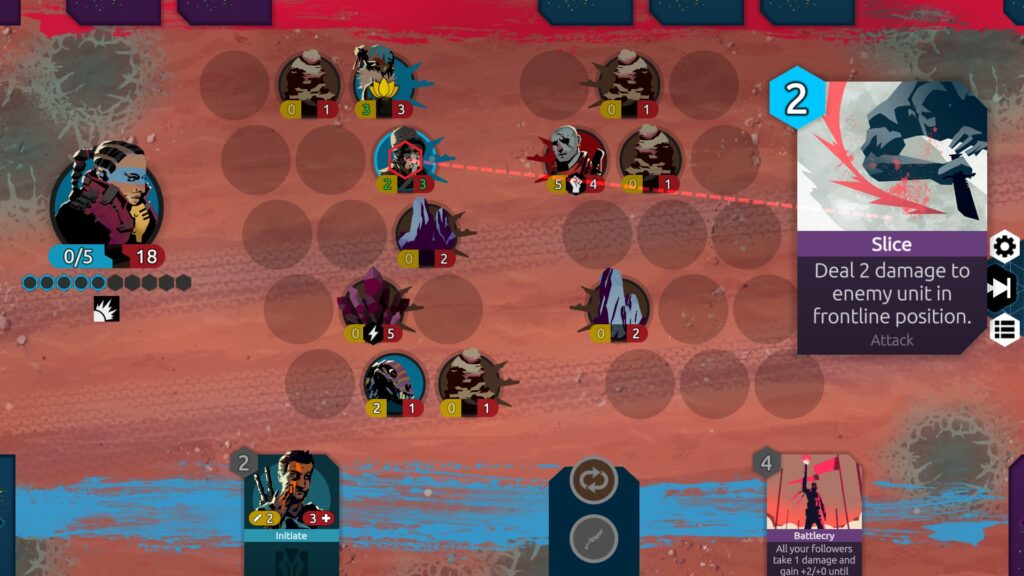
The combat system is solid and about what you’d expect from many tactical card games. However, one of the system’s largest and most unique gimmicks is also potentially its greatest flaw, depending on how you look at it. When a follower falls in battle, they gain an injury. Injured followers cost one energy less to deploy, but also have one less max health. If they are defeated again in a subsequent battle, they are dead permanently. Conversely, if a follower deals the final blow to an enemy opponent, they become blessed, which gives them extra attack power and instantly heals any injuries.
This system is interesting because its a very unique approach in a card game, and forces you to consider your trades more carefully. On the other hand, this means that rush and control decks are the only playstyle that feel truly viable. You don’t want battles to drag on too long because you risk permanently losing cards, and ultimately it leads to a battle system where the followers feel less useful than your direct attack cards and equipment abilities.
Oh, and don’t get me started on how frequently you’ll encounter enemies that spam followers with Taunt, which just further emphasizes a reliance on control decks over your convoy cards. Your goal each encounter will quickly become to end battles within the first few turns, preferably with powerful equipment and direct damage action cards, to minimize your casualties. Depending on how you like to play card games, this could get fairly boring and unengaging really fast.
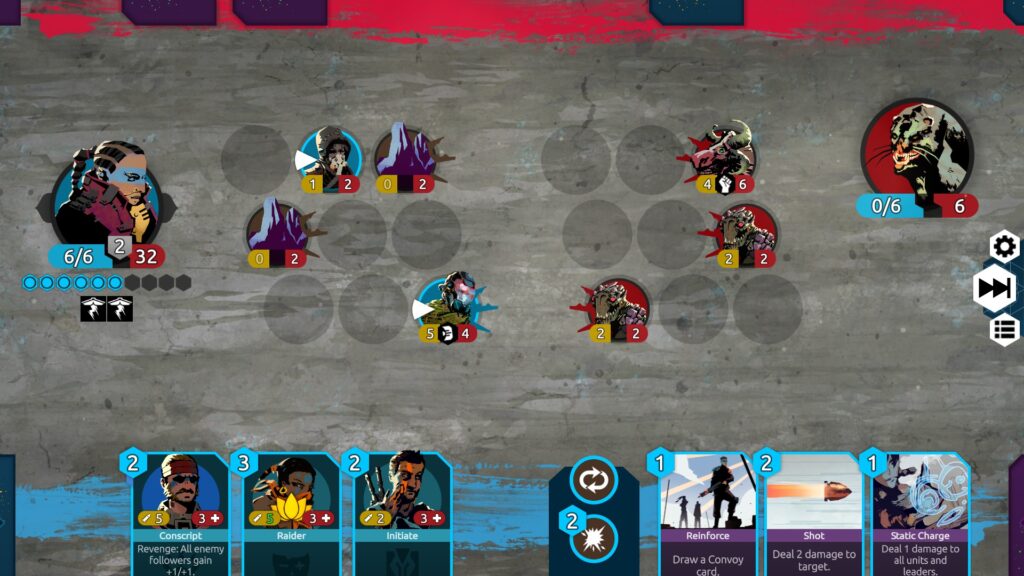
Speaking of which, besides the cards themselves you’ll want to keep an eye out on useful equipment. Your prophet has several equipment slots, and gradually unlocks more as you level up. This allows you to equip various pieces of armor and weapons that grant passive and activatable abilities. The most useful of these are generally the weapons, like rocket launchers, rifles, or swords that give you a once per match attack. Should you find yourself with equipment you don’t need, they can either be sold or dismantled for new action cards. Your equipment is almost as vital as the actual cards you draft, and can give you a gigantic edge in battle.
The AI can be fairly hit or miss too. Sometimes it’ll make logical decisions and decent trades, but other times it can be frustrating and inept. Since the AI doesn’t have to worry about the injury system it’ll often make really unfavorable card trades you’d never even consider doing yourself. Other times it will draw turns out longer than it really needs to.
The first time I hit the final boss I was completely and utterly unprepared and outmatched, and to add insult to injury, the AI dragged out an easy final turn for a solid two minutes as it mindlessly moved units around, attacked random obstacles and followers, and played every card left in its hand before delivering the final battle. On second thought though, maybe the AI was just intentionally trolling me.
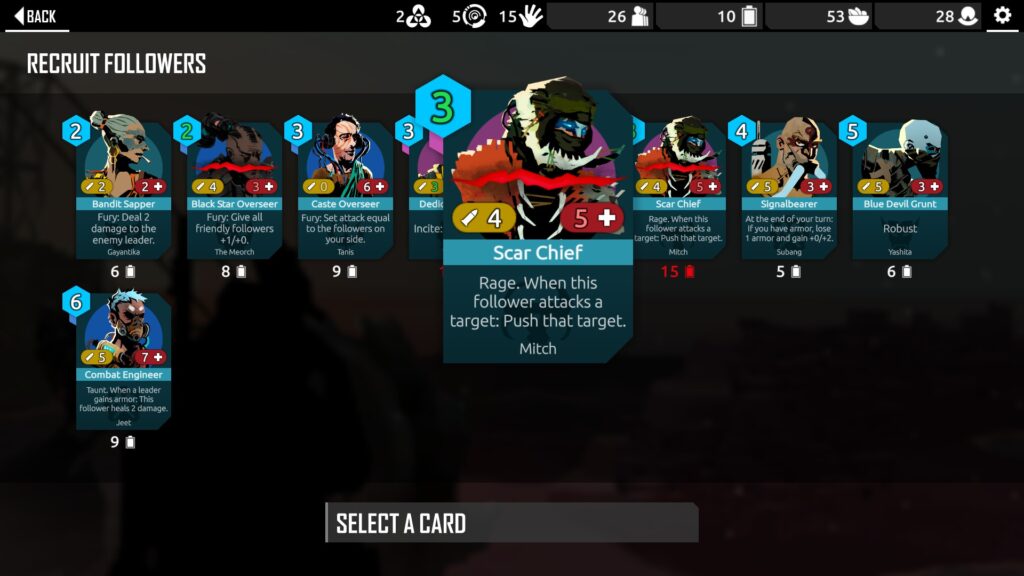
Another big flaw with Nowhere Prophet is its overall difficulty scaling. Generally speaking, if you can survive the first map without too many mistakes or sour luck, you probably won’t have much trouble until the final encounters.
Now that I have a handle on the game’s mechanics, most of my runs start moderately challenging, then I’ll breeze through the entire middle of a game without any real trouble before running into a brick wall in the final few encounters as I face bosses I simply wasn’t properly prepared for. No matter your skill level, it seems like many players agree that the difficulty scaling could use some major tweaking here and there.
Nowhere Prophet is, I feel, a few tweaks and content expansions away from being a truly great roguelite deckbuilder. It has some great presentation, an interesting setting and lore, and fun tactical card-based battles, but stumbles when it comes to difficulty scaling, viable deck build diversity, and random encounter variety. It definitely needs improvement in a lot of places, but I still enjoyed the game despite its flaws. If you love deckbuilding games, its worth keeping Nowhere Prophet in mind next time a Steam sale rolls around.
Nowhere Prophet was reviewed on Windows PC using a review copy provided by Sharkbomb Studios. You can find additional information about Niche Gamer’s review/ethics policy here.